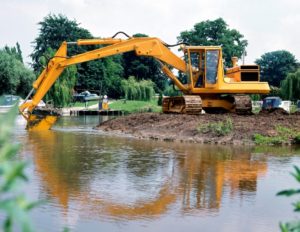 An ESA, short for Environmental Site Assessment, is an evaluation of a property for the purposes of identifying any existing or potential environmental issues. ESAs are ordered during the due diligence period of the sale of a property by lenders and purchasers to avoid contamination liabilities. ESAs are completed for commercial, industrial, and multi-family residential properties as well as undeveloped land. The Phase I ESA is also completed to support the “innocent landowner defense” pursuant to the Comprehensive Environmental Response, Compensation, and Liability Act (CERCLA). The evaluation begins with a Phase I ESA and is followed by a Phase II ESA if necessary.
An ESA, short for Environmental Site Assessment, is an evaluation of a property for the purposes of identifying any existing or potential environmental issues. ESAs are ordered during the due diligence period of the sale of a property by lenders and purchasers to avoid contamination liabilities. ESAs are completed for commercial, industrial, and multi-family residential properties as well as undeveloped land. The Phase I ESA is also completed to support the “innocent landowner defense” pursuant to the Comprehensive Environmental Response, Compensation, and Liability Act (CERCLA). The evaluation begins with a Phase I ESA and is followed by a Phase II ESA if necessary.
What Is a Phase I ESA?
The objective of the Phase I ESA is to assess the environmental condition of the property and identify recognized environmental conditions (RECs), as defined by the American Society for Testing and Materials (ASTM), in connection with the property. The Phase I ESA comprises the following steps:
- Site inspection for petroleum products, hazardous chemical storage areas, chemical spills, underground storage tanks, clarifiers, sumps, and pits, among other things
- Review of federal, state and local governmental files
- Review of historical sources including aerial photographs, topographic maps, city directories, fire insurance maps, recorded land title records, building department records, and environmental reports
- Interviews with tenants, current and past owners, key site managers, neighbors and government officials
- Review of public records of neighboring properties that are hazardous or contaminated as per federal and state regulations to evaluate contamination risk
- Review of the physical setting of the property, including general geology, topography, and hydrogeology
- A review of recorded land title records, regulatory agency records, and State Institutional Controls/Engineering Controls databases for environmental liens or activity and use limitations (AULs)
- Review potential vapor encroachment conditions (VECs) at the property
- Out-of-scope, optional considerations may include mold, lead, radon, asbestos, wetlands, flood zone, and seismic hazards
What Is a Phase II Environmental Site Assessment?
If RECs are identified during a Phase I ESA, a Phase II ESA may be requested. Phase II ESAs involve sampling of groundwater, soil, soil vapor, and indoor air to check for chemicals such as petroleum hydrocarbons, volatile organic compounds, metals, and other contaminants. The following tasks may be conducted during the second phase to verify the existence and concentrations of hazardous substances:
- Surficial soil and water sampling
- Subsurface soil, soil vapor, and groundwater sampling
- Geophysical testing to identify buried drums and tanks
- Sampling of indoor air to evaluate health risks to occupants
- Installation of groundwater monitoring wells to evaluate groundwater beneath the site and neighboring properties
What Standards Should Be Followed for an Environmental Site Assessment?
Phase I ESAs must meet the most updated standards established by ASTM and the All Appropriate Inquiries Rule (AAI) under CERCLA. Phase II ESAs must comply with applicable USEPA, State, and local regulatory agency requirements. The assessments must be performed by environmental experts with professional registrations who are trained in the fields of geology, hydrogeology, environmental science, engineering, biology, and chemistry, among others.
EEC Environmental has over 20 years of experience providing consulting services to a variety of clients. If you are in search of an environmental site assessment company, need remediation help with a contaminated site or simply have questions regarding any of the assessment steps or services, contact us and one of our experts will assist you.



